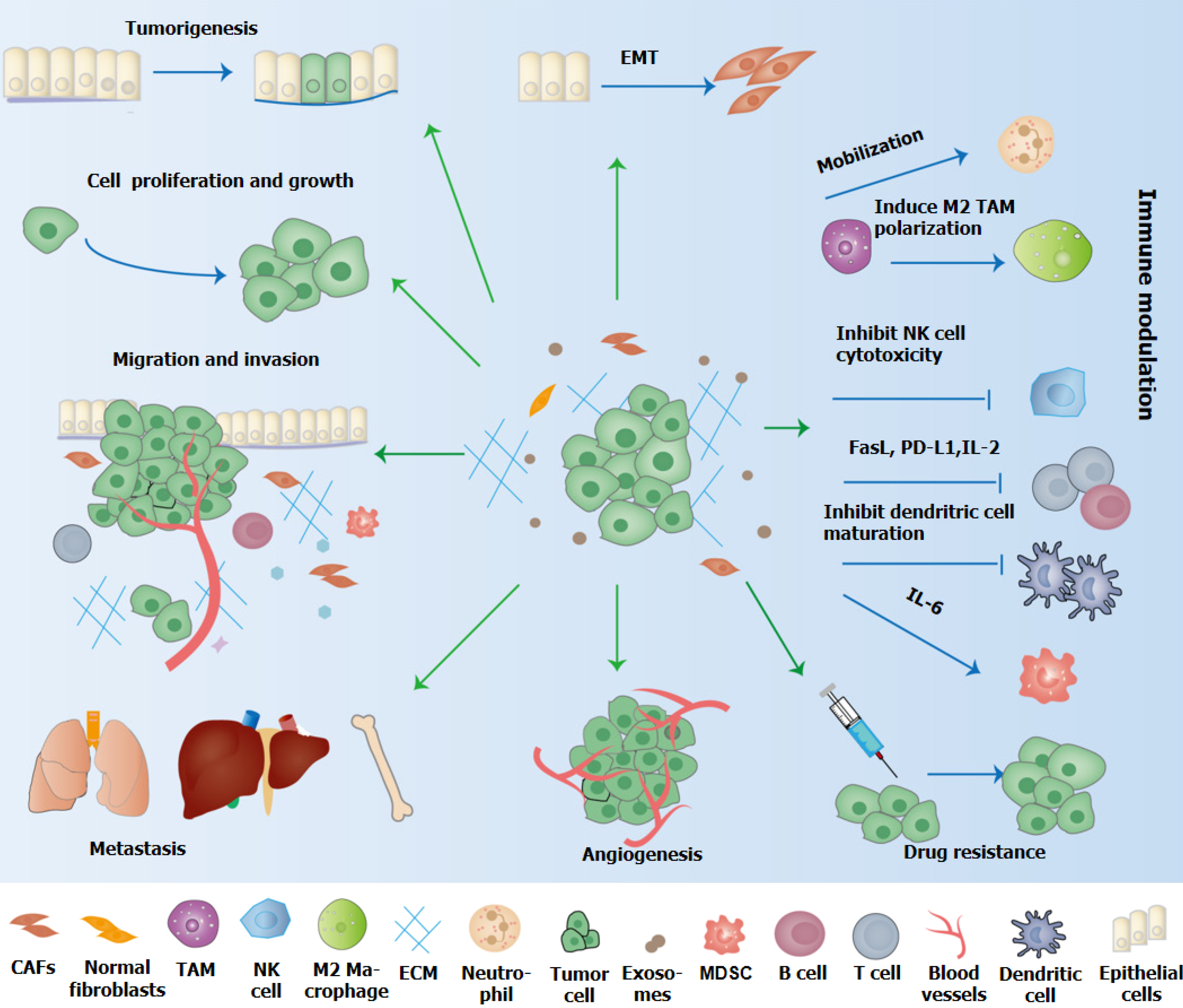Copyright
©The Author(s) 2024.
World J Gastrointest Oncol. Mar 15, 2024; 16(3): 630-642
Published online Mar 15, 2024. doi: 10.4251/wjgo.v16.i3.630
Published online Mar 15, 2024. doi: 10.4251/wjgo.v16.i3.630
Figure 1 The biogenesis and release of exosomes.
Exosomes form early endosomes in the cell membrane and then transform into multivesicular bodies, which are fused with the cell membrane and released into the extracellular matrix. Exosomes enter target cells in three ways: Direct fusion, endocytosis and protein receptor interaction. ER: Endoplasmic reticulum; ILV: Intraluminal vesicle; MVBs: Multivesicular bodies; MHC: Major histocompatibility complex; PRGL: Proteoglycan; TSG101: Tumor susceptibility gene 101; miRNA: MicroRNA; ALIX: ALG2-interacting protein X; TAA: Target-associated antigen; PD-L1: Programmed cell death-ligand 1; FasL: Fas ligand.
Figure 2 The role of exosome in the initiation and development of gastric cancer.
Exosomes affect tumorigenesis, epithelial-mesenchymal transformation, proliferation, invasion, angiogenesis, metastasis, immune escape and drug resistance of gastric cancer. EMT: Epithelial-to-mesenchymal transition; TAM: Tumor-associated macrophage; NK: Natural killer; FasL: Fas ligand; PD-L1: Programmed cell death-ligand 1; IL: Interleukin; CAFs: Cancer-associated fibroblasts; MDSC: Myeloid suppressor cell.
- Citation: Guan XL, Guan XY, Zhang ZY. Roles and application of exosomes in the development, diagnosis and treatment of gastric cancer. World J Gastrointest Oncol 2024; 16(3): 630-642
- URL: https://www.wjgnet.com/1948-5204/full/v16/i3/630.htm
- DOI: https://dx.doi.org/10.4251/wjgo.v16.i3.630










